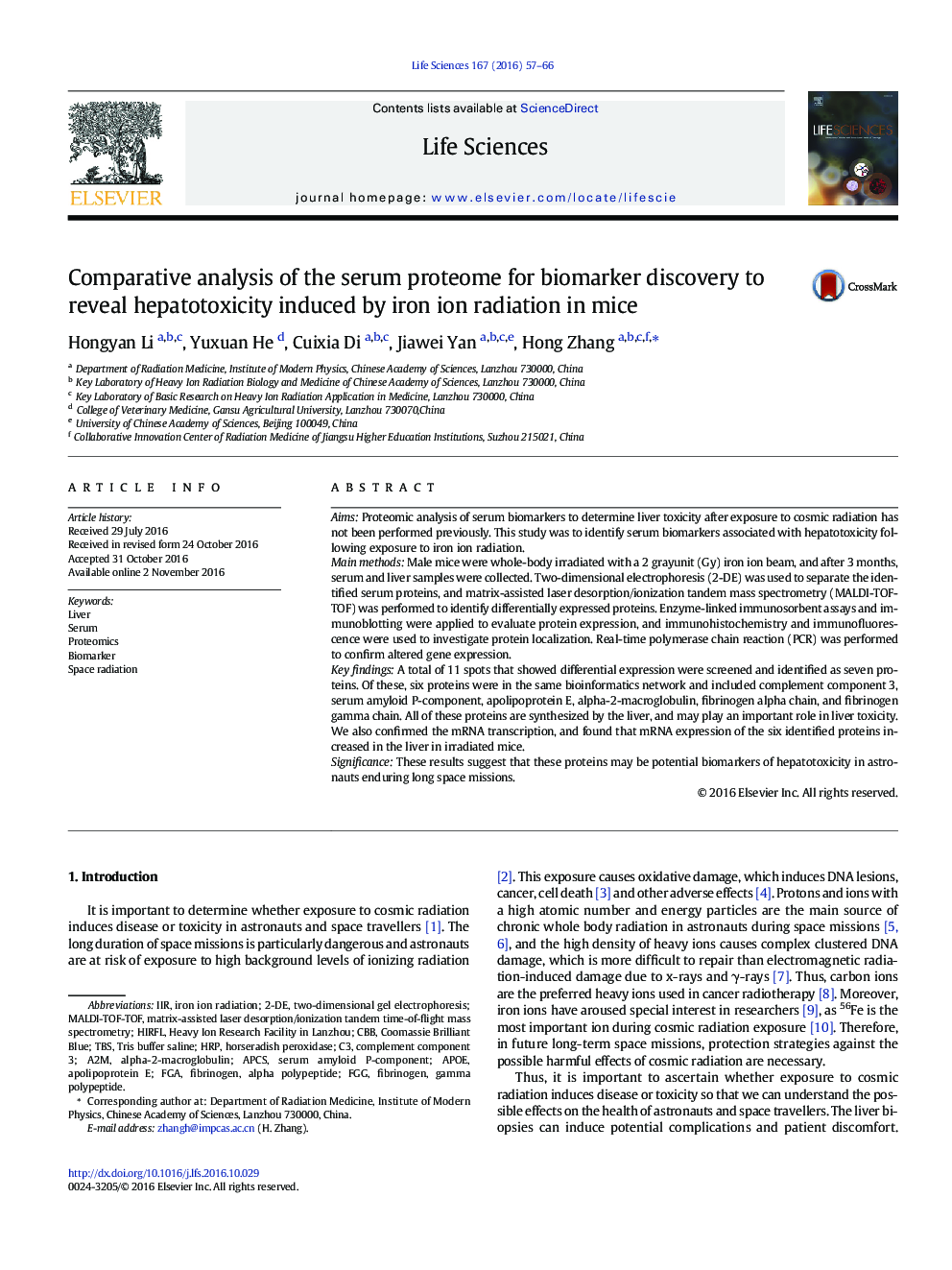| Article ID | Journal | Published Year | Pages | File Type |
|---|---|---|---|---|
| 5557113 | Life Sciences | 2016 | 10 Pages |
AimsProteomic analysis of serum biomarkers to determine liver toxicity after exposure to cosmic radiation has not been performed previously. This study was to identify serum biomarkers associated with hepatotoxicity following exposure to iron ion radiation.Main methodsMale mice were whole-body irradiated with a 2Â grayunit (Gy) iron ion beam, and after 3Â months, serum and liver samples were collected. Two-dimensional electrophoresis (2-DE) was used to separate the identified serum proteins, and matrix-assisted laser desorption/ionization tandem mass spectrometry (MALDI-TOF-TOF) was performed to identify differentially expressed proteins. Enzyme-linked immunosorbent assays and immunoblotting were applied to evaluate protein expression, and immunohistochemistry and immunofluorescence were used to investigate protein localization. Real-time polymerase chain reaction (PCR) was performed to confirm altered gene expression.Key findingsA total of 11 spots that showed differential expression were screened and identified as seven proteins. Of these, six proteins were in the same bioinformatics network and included complement component 3, serum amyloid P-component, apolipoprotein E, alpha-2-macroglobulin, fibrinogen alpha chain, and fibrinogen gamma chain. All of these proteins are synthesized by the liver, and may play an important role in liver toxicity. We also confirmed the mRNA transcription, and found that mRNA expression of the six identified proteins increased in the liver in irradiated mice.SignificanceThese results suggest that these proteins may be potential biomarkers of hepatotoxicity in astronauts enduring long space missions.
Graphical abstractDownload high-res image (128KB)Download full-size image
